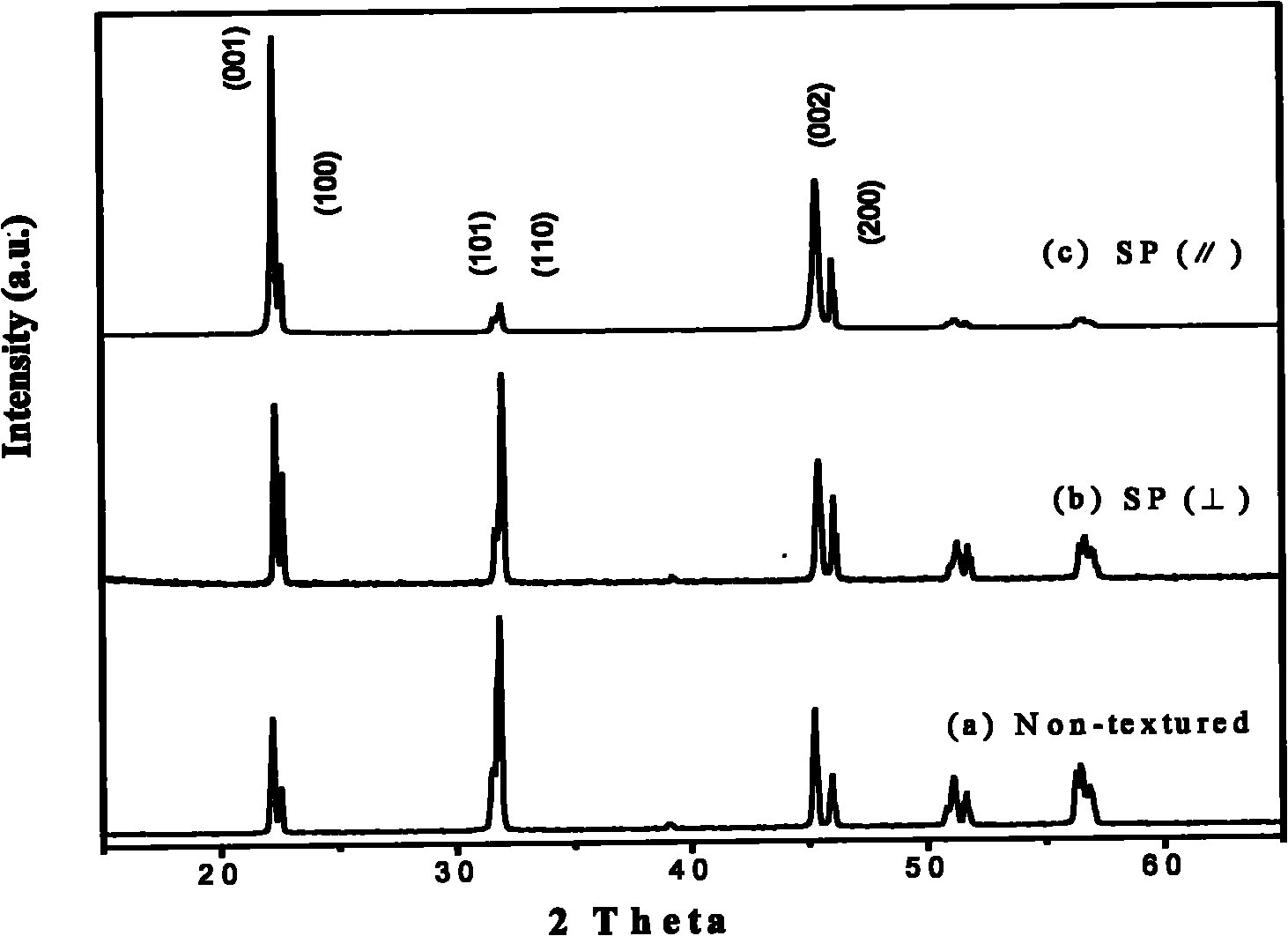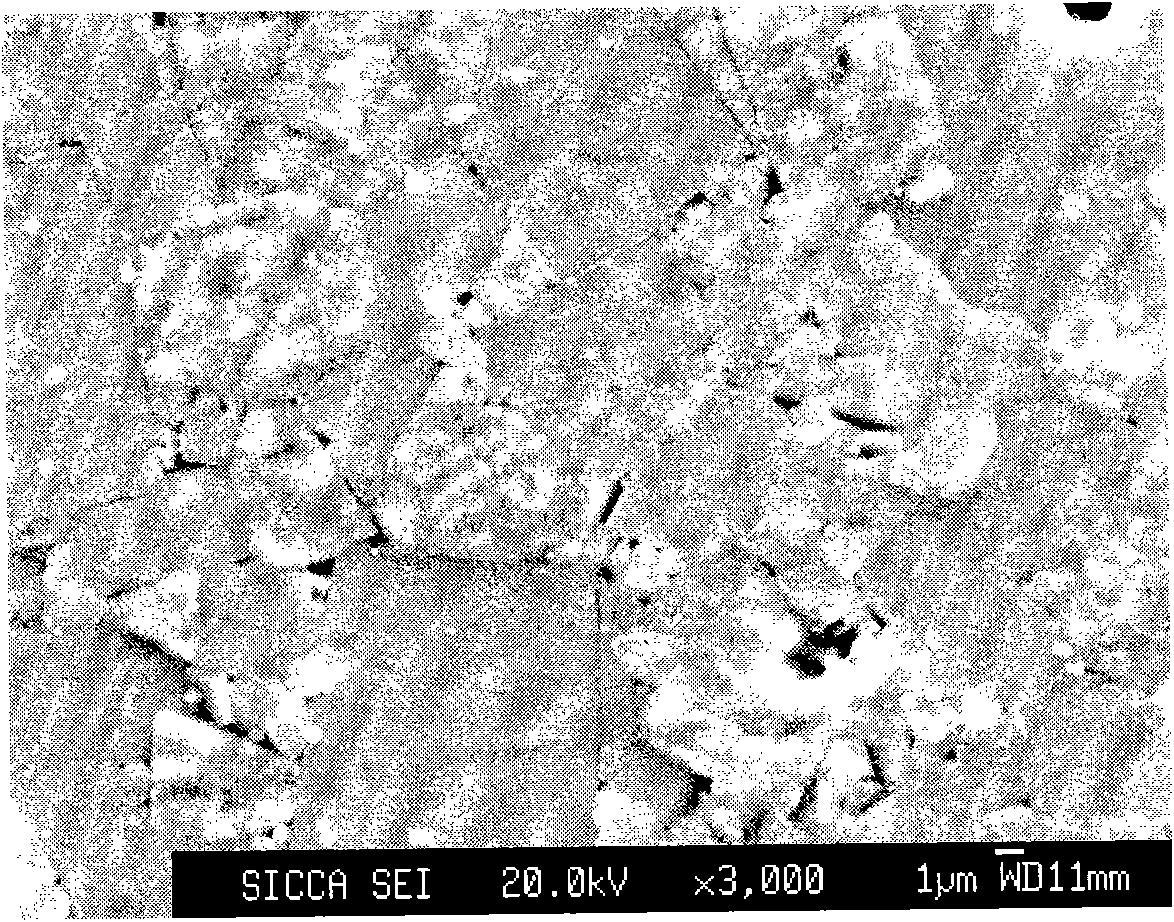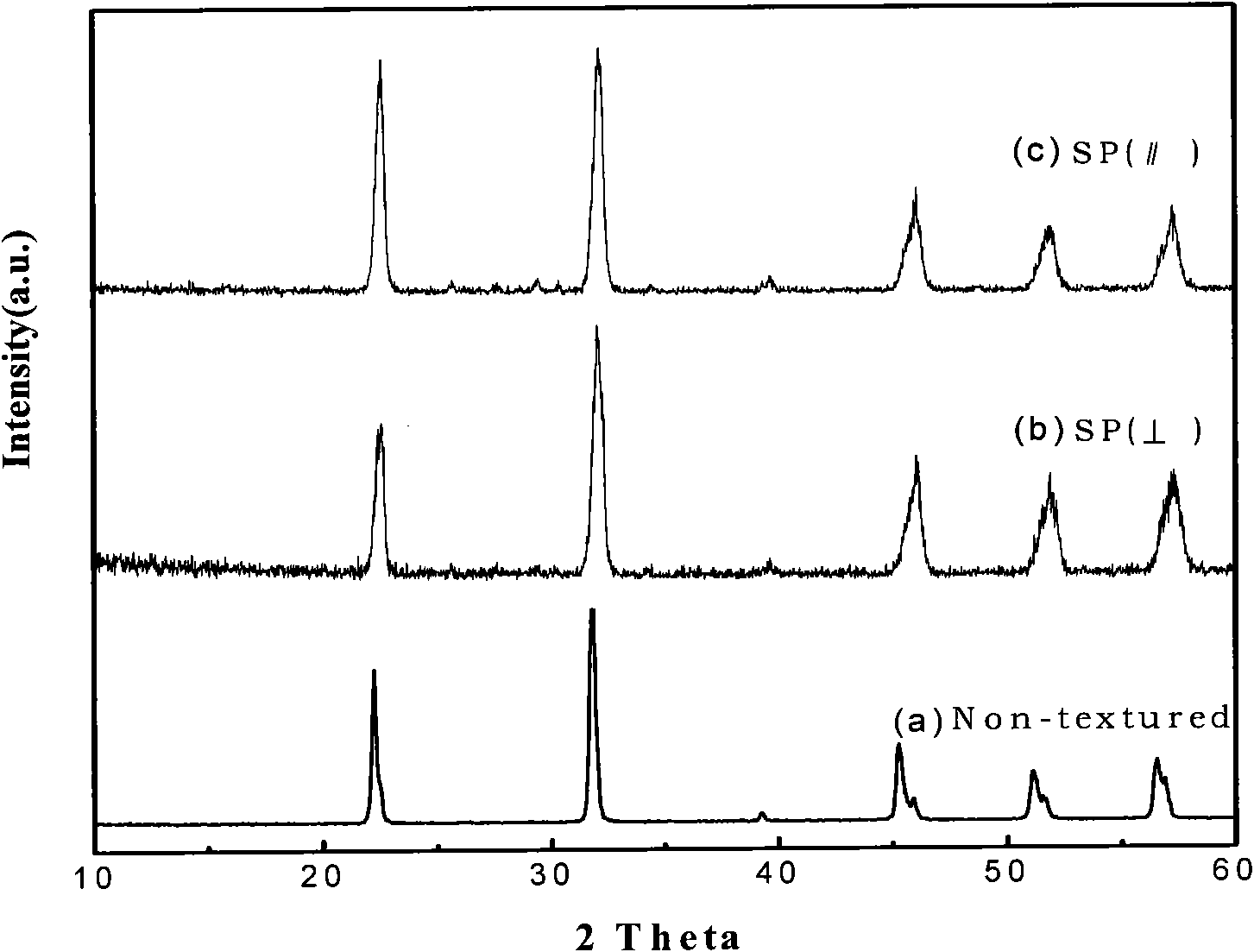Method for preparing textured potassium niobate sodium-based leadless piezoelectric ceramic
A potassium-sodium niobate-based, lead-free piezoelectric technology, applied in the field of lead-free piezoelectric ceramics preparation, can solve the problems of affecting grain orientation, complex process, uneven thickness, etc., achieve good stability and simplify the preparation process , low-cost effect
- Summary
- Abstract
- Description
- Claims
- Application Information
AI Technical Summary
Problems solved by technology
Method used
Image
Examples
Embodiment 1
[0048] (1) Slurry preparation: 6.74 g of ethyl cellulose was dissolved in 149.39 g of terpineol, heated and stirred until the ethyl cellulose was completely dissolved to form a transparent solution. Weigh 9.558g Na 2 CO 3 , 13.834g K 2 CO 3 , 50.758gNb 2 o 5 Mix it with 0.3g CuO and pre-calcine at 800°C, then add it to the above solution, ball mill for 2 hours and mix well. Then 2.746g NaNbO 3 The flaky template grains were added into the slurry, and ball milling was continued for 30 minutes.
[0049] (2) Screen printing: screen-print the configured slurry on the polyester film, put it in an oven at 100°C for drying, repeat the screen printing and drying for about 40 to 50 times, and finally form a 0.2mm ceramic film .
[0050] (3) Molding: Cut the obtained ceramic membrane into a square piece of 11 mm×11 mm, remove the membrane piece from the substrate, overlap about 50 layers, and press into shape.
[0051] (4) Plastic discharge sintering: put the above-mentioned ce...
Embodiment 2
[0054] (1) Slurry preparation: 5.68 g of ethyl cellulose was dissolved in 125.98 g of terpineol, heated and stirred until the ethyl cellulose was completely dissolved to form a transparent solution. Weigh 9.688gNa 2 CO 3 , 10.648gK 2 CO 3 , 0.522gLi 2 CO 3 , 39.269gNb 2 o 5 , 7.734gTa 2 o 5 , 3.073gSb 2 o 3 Add 36.9g KCl and 34.2g NaCl and mix, react at 770°C for 2 hours, use deionized water to wash off the remaining molten salt, and obtain 57.768g of K 0.44 Na 0.52 Li 0.04 (Nb 0.84 Ta 0.1 Sb 0.06 )O 3 Ceramic powder. Add this powder into the above transparent solution, and mix well by ball milling for 2 hours.
[0055] (2) Screen printing: screen-print the configured slurry on the polyester film, put it in an oven at 100°C for drying, repeat the screen printing and drying for about 40 to 50 times, and finally form a 0.2mm ceramic film .
[0056] (3) Molding: Cut the obtained ceramic membrane into a square piece of 11 mm×11 mm, remove the membrane piece fro...
Embodiment 3
[0060] (1) Slurry preparation: Dissolve 8.88 g of ethyl cellulose in 196.97 g of terpineol, heat and stir until the ethyl cellulose is completely dissolved to form a transparent solution. Weigh 12.014g Na 2 CO 3 , 15.202g K 2 CO 3 , 0.739gLi 2 CO 3 , 51.388g Nb 2 o 5 , 11.047gTa 2 o 5 , 4.347g Sb 2 o 3 Mix it with 0.36g CuO and pre-calcine at 800°C, add it to the above solution, and ball mill for 2 hours to mix well. Then 5.464g NaNbO 3 The flaky template grains were added into the slurry, and ball milling was continued for 30 minutes.
[0061] (2) Screen printing: screen-print the configured slurry on the polyester film, put it in an oven at 100°C for drying, repeat the screen printing and drying for about 40 to 50 times, and finally form a 0.2mm ceramic film .
[0062] (3) Molding: Cut the obtained ceramic membrane into a square piece of 11 mm×11 mm, remove the membrane piece from the substrate, overlap about 50 layers, and press into shape.
[0063] (4) Plast...
PUM
 Login to View More
Login to View More Abstract
Description
Claims
Application Information
 Login to View More
Login to View More - R&D
- Intellectual Property
- Life Sciences
- Materials
- Tech Scout
- Unparalleled Data Quality
- Higher Quality Content
- 60% Fewer Hallucinations
Browse by: Latest US Patents, China's latest patents, Technical Efficacy Thesaurus, Application Domain, Technology Topic, Popular Technical Reports.
© 2025 PatSnap. All rights reserved.Legal|Privacy policy|Modern Slavery Act Transparency Statement|Sitemap|About US| Contact US: help@patsnap.com



